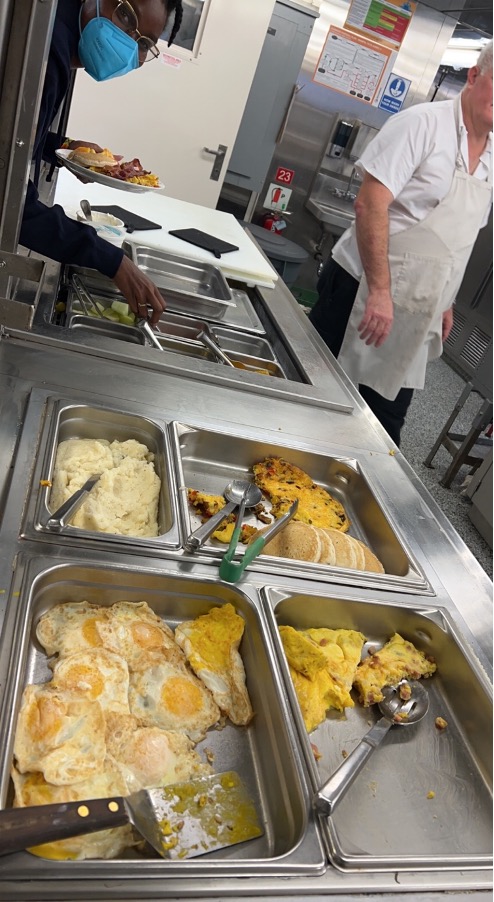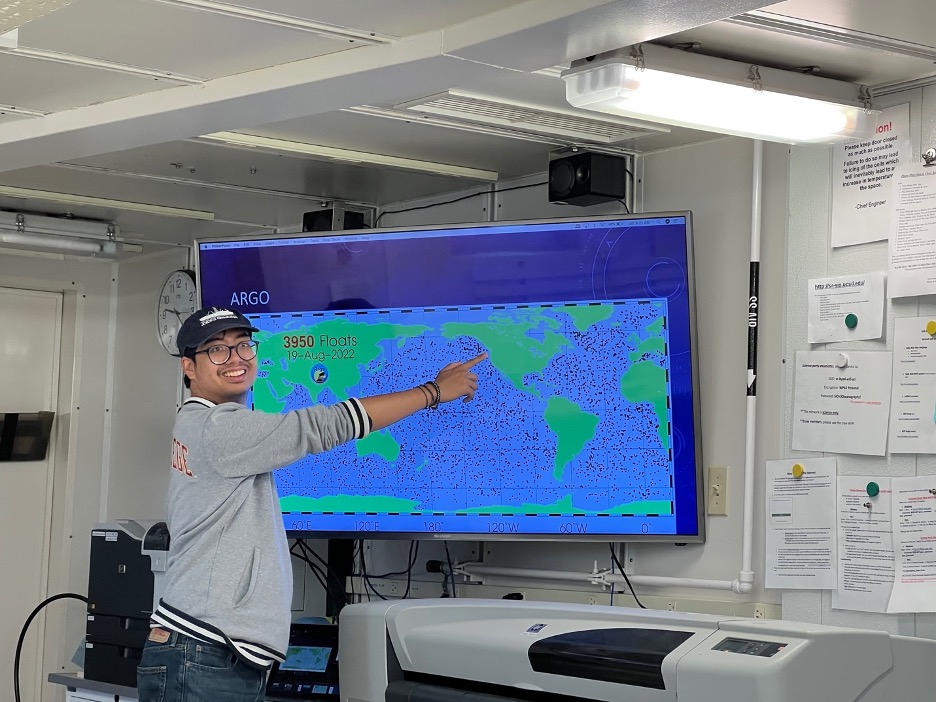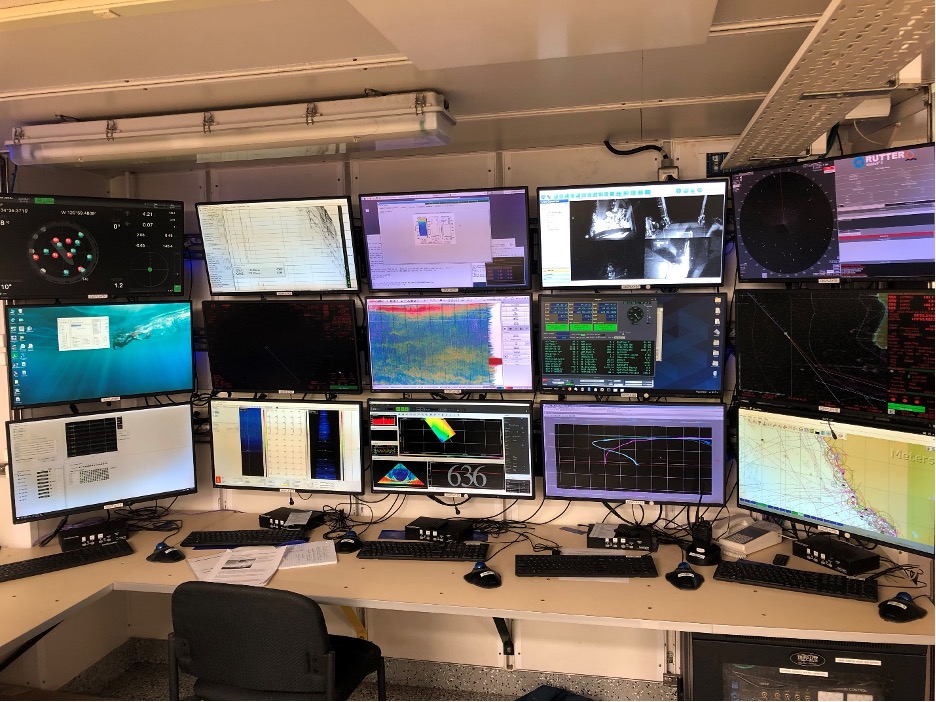After several days at sea, the Sally Ride docked once again in the port of San Diego – a warm, postcard-like city chock-full of breathtaking sunsets, diverse flora, and culture.
One of the activities we participated in was a tour of the Birch Aquarium at Scripps Institution of Oceanography. This tour was led by Dr. Cheryl Peach (the Director of Scripps Educational Alliances), our mentors, and our curiosity for the West Coast’s California current. I took some time during our excursion to reflect on the adventure whose conclusion was just one sunrise away.
At first, I was disappointed with the content of our expedition and the lessons that I was scheduled to learn. For some reason, my subconscious expected the familiar online lectures I had grown accustomed to in the past 2 years. But with a very limited access to internet in the swells of the Pacific, even short YouTube videos weren’t conceivable… let alone entire lectures. I expected textbooks, notes, strict schedules, and scrutinous examination. Essentially, I expected the average monotony that I feel so unintentionally comfortable with. But after a couple of days of lacking that genre of learning and feeling oddly dismayed, I recall one of the first memories I made on the trip.
I woke up from the first night on board. At this point, the boat was still docked in Seattle and was set to embark toward San Diego in the early morning. Before we embarked, I felt it necessary to say a prayer to the water supporting the ship. I prayed for a good experience for everyone on board and that we have safe travels down the coast. It felt awkward because the crew began their work as I was singing. Surely no one is watching me… I’m completely out of the way! I thought. But as I wrapped up and turned away from the brisk air of the Puget sound, I found someone observing me.
“Good morning,” I muttered with a hint of timidness.
“Good morning. What is it that you were doing?” he asked back. I was taken aback with the bluntness of his inquiry. The inquisitor was a stout man in a black, newsboy cap, a dark zip-up hoodie, and jeans. He seemed to enjoy a cup of a warm drink in the same cold air I was escaping. Anxious that I may have upset him, I let him know that I was saying a prayer to the water and that I had the captain’s permission–
“Haha! Don’t worry…I know exactly what you were doing,” he said with a smile. “I just wanted to make sure…I don’t see many people doing that on this ship!” The man went on to tell me about his Lakota background and a wave of warm affinity washed over me. He and I spoke for several minutes about a myriad of things, but one part of our conversation felt especially relevant a few days into the trip.
“You can’t feel it as much now, but when we get out there… everything is magnified. Spirit itself is magnified. Everything you do counts and matters… and at the same time you gotta know when to swim and when to float. She can tell you what I mean.” He told me as he pointed to the water on the side of the ship. He sipped his coffee and let his words sink in as the crew around us began to move lines and prepare to put the ship at sea.
Unclear as to what he meant, I asked him to clarify. He told me that at sea, you will be swayed and swung and that the more you fight the energy around you, the more challenging it gets. At some point you will have to learn to let yourself be humbled by what is going on around you. From motion-sickness all the way to deep emotion, fighting against such a strong force will only set you back.
His advice certainly helped with motion sickness, but it wasn’t until a few days later that I applied it to our cruise’s curriculum. As soon as I did, my outlook on the cruise pivoted from disappointment toward excitement and growth. Immediately, I felt more present and began learning more about the ocean around me, about the careers around me, and about the importance of marrying science with everyday life. I realized that the lack of Internet connection made way to learning by experience rather than textbook chapters. I championed my experience in probing the water column and all the small details necessary to do so. I cherished my experience in interpreting the data collected by the R/V Sally Ride’s many instruments as it came into the screens of the bridge and the lab. I was humbled by experiencing the teamwork necessary to stop an entire vessel and deploy scientific instruments into the sea.
I felt grateful when I realized that every job onboard ships like the R/V Sally Ride supports the textbooks that I left ashore. And as we were greeted by the barks of San Diego’s sea lions, I reminisced on the times during that week in which I lived in a textbook, and not just studied it.
During my reflection at Scripps Birch Aquarium, I saw sea anemone sway with the tank’s artificial current and I remembered the wisdom gifted to me. I smiled at the realization that those wise words changed my experience (for the better) entirely. By the end of the trip, I acquired experiences that undoubtedly encouraged professional development in communication and oceanography-related skills. These were the experiences that I originally expected and desired, but sitting at the Birch Aquarium, I realized there was one unexpected aspect of the cruise that I especially valued. I learned that our experiences resemble the sea in so many ways; they both ebb and flow, they both feel choppy at times or like calm swells, and they can both be unforeseeable at times. However, there is one lesson that I will always carry with me from now on: I learned that, sometimes, the best way to move through life is to accept its lessons and reckon with desires that fight against its flow.
I hope this lesson helps me continue to find similar joy in my life, just like it did at sea.
– Fer Juárez Durán






















